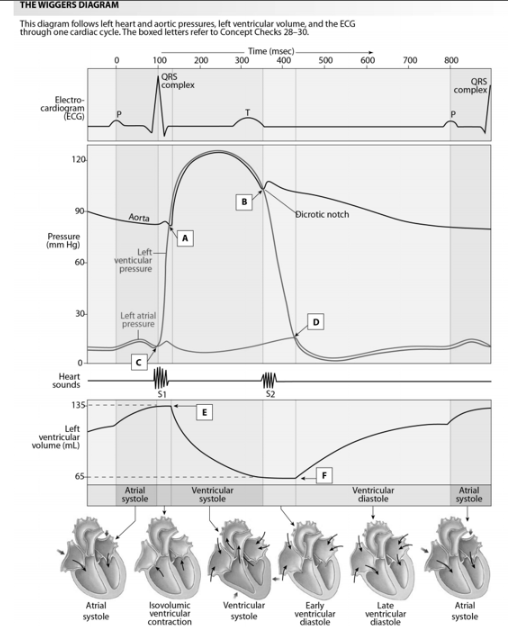Answer the following statements true (T) or false (F)
1. If the sodium bicarbonate-carbonic acid buffer pair were to buffer a solution of HCl, sodium chloride would be produced.
2. If the sodium bicarbonate-carbonic acid buffer pair were to buffer a solution of HCl, more sodium bicarbonate would be produced.
3. When buffer systems buffer an acid, a strong acid is replaced with a weak acid.
4. If the sodium bicarbonate-carbonic acid buffer pair were to buffer a solution of NaOH, water would be an end product.
5. If the sodium bicarbonate-carbonic acid buffer pair were to buffer a solution of NaOH, the amount of carbonic acid would increase.
1. TRUE
2. FALSE
3. TRUE
4. TRUE
5. FALSE
You might also like to view...
Using the figure below (Fig. 14.18 from your text), calculate the following values:

A) Heart rate
B) Stroke volume
C) Cardiac output
D) Mean Arterial PressureWhat will be an ideal response?
The P wave of a normal electrocardiogram indicates ________.
ventricular depolarization ventricular repolarization atrial repolarization atrial depolarization
Blood pressure is ________
A) generally measured in veins B) the pressure of the blood against the blood vessel walls C) a number that is the average of the systolic and diastolic pressures D) the pressure of the blood against the blood vessel walls, generally measured in veins, and a number that is the average of the systolic and diastolic pressures
What makes lymphatic vessels similar to the venous circuit of the cardiovascular system?
A) Both vessels operate under high pressure. B) Both vessels have valves. C) Both vessels feed into capillary beds. D) Both vessels have a thick tunica media.